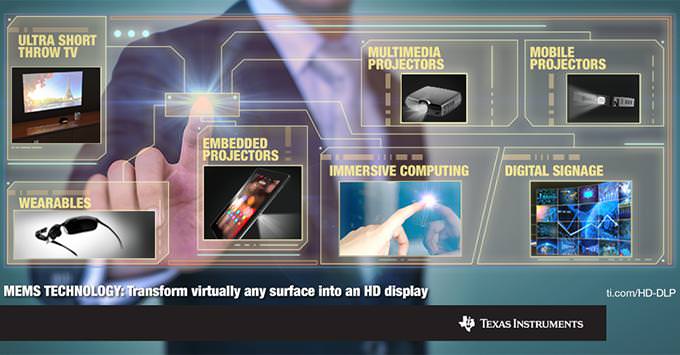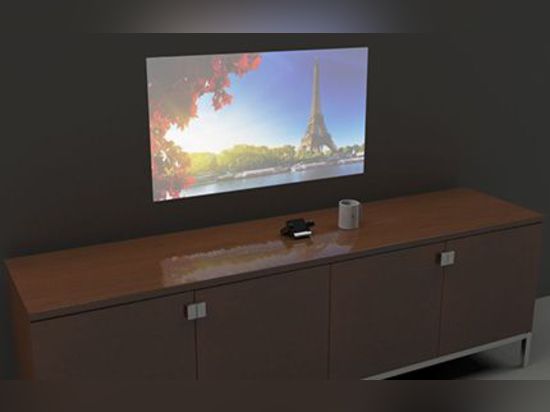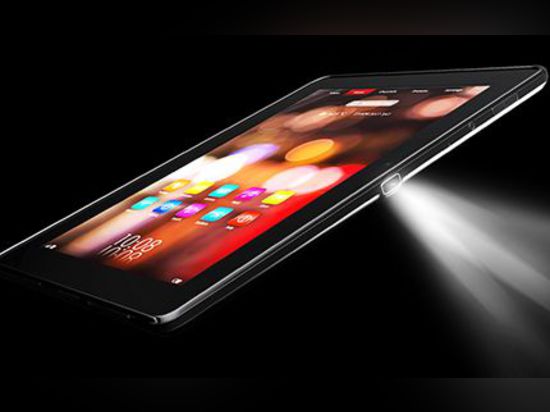
#IT & Technology - Telecom
MEMS technology enables innovative functions for portable HD projection
The imaging choice for nearly 90% of the world's digital theatre screens
Micro-electro-mechanical systems (MEMS) display technology, renowned for its excellent image quality, is used in more than 80 percent of the world’s digital cinemas. Recent innovations in size, efficiency and brightness now enable this same proven technology to be incorporated into small form factor and battery-powered devices, allowing developers, brands and system integrators to create applications and products than can transform virtually any surface into a high-quality HD projection display.
Imagine an aftermarket head up display (HUD) clipped to your automobile visor which projects driving directions on your windshield. Envision a tablet with a built-in pico projector, allowing you to share big screen content with others, anytime and virtually anywhere. Visualize near-eye display eyewear that displays information such as navigation and social media updates right in front of your eyes. These are just a few examples of innovative consumer or industrial applications that are possible with recent advancement in MEMS-based projection display technology.
A digital micromirror device (DMD) can contain millions of individually controlled micromirrors, each built on top of an associated complementary metal-oxide semiconductor (CMOS) memory cell.
On its own, a DMD acts as an electrical input-optical output device that allows developers to perform high speed, efficient, and reliable spatial light modulation. When combined with RGB LEDs and optical lenses in an assembly called an optical engine, DMD-based projection systems can display vibrant high definition images and video.
DLP IntelliBright technology is a new suite of image processing algorithms capable of two key functions: the ability to dynamically adjusting each RGB LED to optimize true brightness, contrast, and system power; and additionally, the ability to intelligently boost darker regions of images to increase perceived brightness.
MEMS technology advances innovative new display applications
The trend toward smaller form factors, lower power consumption and higher resolution MEMS display devices is driving a wave of innovative applications where just about any surface can be transformed into a high definition display.
Advances in MEMS for use in projection can now be found in immersive computing, mobile projectors, screenless TVs, control panels, interactive displays, wearable computing devices like near-eye displays, aftermarket heads-up displays and low latency displays for video games. Let’s dig deeper into each of these examples.
From laptops to smartphones to tablets, personal computing devices can now be equipped with MEMS display technology. Beyond typical, personal computing tasks, these devices can now transform virtually any surface into a home theater, or a display for a business presentation.
Personal devices like smartphones, tablets, laptops and mobile projectors can now deliver a big screen experience. These plug-and-play products offer extreme portability, HD resolution, low power and are ideal for numerous enterprise and consumer uses. These versatile devices address a wide range of consumer needs, from road warriors who want to deliver memorable presentations to clients around the world to parents who are hosting a neighborhood movie night in their backyard.
When MEMS technology is combined with motion sensing capabilities, desktop computers can support interactive displays to give users an immersive computing experience – including the revolutionary ability to manipulate the user interface by touching a surface instead of using a physical mouse, keyboard or touch screen. There are several products already on the consumer market with this capability.
Beyond walls and other flat surfaces, the small size, high resolution, low latency and low power consumption capability of this new generation of MEMS devices is also ideal for augmented and virtual reality applications using near-eye display. They can deliver wearable computing experiences – either for hyper-realistic video game systems or at-a-glance wearable computers.
For ultimate portability, screen-free display lets users watch streaming video from a standalone, portable, battery powered device that projects large images onto a wall or any surface. There’s no bulky TV, no cluttered cables – just a small portable device that can be used at home or on the road.
Putting it all together
The continued innovation in MEMS-based DMDs is giving developers more opportunities to incorporate projection based display technology across a variety of applications for industrial, consumer and enterprise markets.
A robust ecosystem is already in place to help developers rapidly get products to market and support the current and evolving needs of customers.
For example, TI maintains the most extensive ecosystem of DLP pico optical engine manufacturers in the industry, eliminating the need for developers to have their own optics expertise. The makers of these optical modules, which incorporate a DMD, an LED-based illumination source, and the necessary mirrors and lenses that form the core of a projection system, are independent, well-established companies that provide turnkey optical modules to a worldwide customer base.
Using MEMS display technology available today, projection technology continues to get smaller, brighter and more efficient enabling innovative new high definition display applications from compact form factors.


